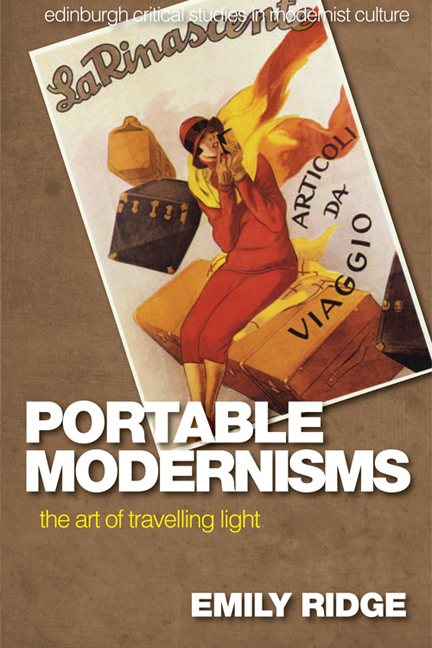Book contents
- Frontmatter
- Contents
- Illustrations
- Acknowledgements
- Series Editors’ Preface
- Dedication
- Introduction
- 1 ‘Living modernly's living quickly’: Towards Travelling Light
- 2 ‘A purse of her own’: Women and Carriage
- 3 ‘No one is safe from the beggar's pack’: Portability and Precarity
- 4 ‘Have you anything to declare?’: Portable Selves on Trial
- Conclusion
- Bibliography
- Index
Introduction
Published online by Cambridge University Press: 22 December 2017
- Frontmatter
- Contents
- Illustrations
- Acknowledgements
- Series Editors’ Preface
- Dedication
- Introduction
- 1 ‘Living modernly's living quickly’: Towards Travelling Light
- 2 ‘A purse of her own’: Women and Carriage
- 3 ‘No one is safe from the beggar's pack’: Portability and Precarity
- 4 ‘Have you anything to declare?’: Portable Selves on Trial
- Conclusion
- Bibliography
- Index
Summary
In some of the outlying boulevards recently we have seen trunks piled up in grim heaps like the walls of a fortress (which they were intended to imitate) with here and there an opera-glass case projecting or a tightlyrolled hold-all, to resemble a cannon. The idea is ingenious and martial – but not successful. The window is too much transformed. You forget what you are looking at. You only see the backs of the trunks. And as a witty German said the other day, ‘Trunks and portmanteaus ought not to be piled up in the shape of a fortress of defence. For they are the very things we use when we run away’.
The above passage, describing a display of luggage in a German shop window, comes from a 1909 edition of the rather cumbersomely titled The Bag, Portmanteau and Umbrella Trader and Fancy Leather Goods and Athletic Trades Review, a trade journal targeted at businesses affiliated to the leather and travelling goods industries, with a focus, as the title acknowledges, on the luggage trade. Trade journals exist to provide specialised information and news for the benefit of specific industries in a very practical vein, but they also aim to keep abreast of any current social or cultural trends which might well impact on consumer habits. The particular article from which the passage is drawn was written by a continental correspondent, tasked with surveying the luggage scene in other parts of Europe – Germany, in this case – in order to feed back to interested parties in Britain. According to the same journal, Germany was the innovative centre of the leather goods industry during this period, so this was a scene to be scouted with some attention. The correspondent is directly concerned here with the solutions devised by trunk-makers for the problem of how to reduce the monotony of the usual and obvious trunkpile window display. The shop window was becoming a vital aspect of a ‘new commercial aesthetic’, which foregrounded the persuasive power of the visual. We can see the formation of such an aesthetic in this passage in the question of how best to use a window, but we can also see the formation of a new portable aesthetic in the question of how best to present travelling goods to the public.
- Type
- Chapter
- Information
- Portable ModernismsThe Art of Travelling Light, pp. 1 - 30Publisher: Edinburgh University PressPrint publication year: 2017



